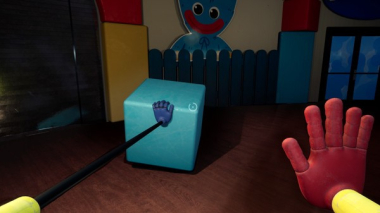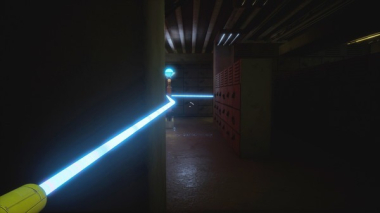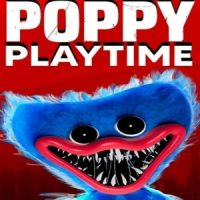Poppy Playtime review

Phase-7.net is not an official representative or the developer of this application. Copyrighted materials belong to their respective owners
Poppy Playtime is a unique horror game created by indie developer MOB Games that takes players into the eerie and abandoned toy factory of Playtime Co. With innovative gameplay mechanics and an intriguing storyline, the game has captivated players since its initial release. In this in-depth analysis, I will share firsthand experiences exploring the puzzles, terror, and complexities that populate this impressive game.
As a player, you step into the shoes of a former Playtime Co. employee returning to uncover the fate of your missing colleagues. The once-thriving factory now stands as a creepy reminder of its past, with toys that have taken on a life of their own. The main attraction, however, is Poppy Playtime herself, a lifelike doll with mysterious characteristics.
The core gameplay involves solving various environmental puzzles using a unique tool known as the "GrabPack," a pair of hands connected by a stretchable, electrical wire. This tool not only helps in solving puzzles but also serves as your primary means of interaction with the world around you.
Decoding the Story of Poppy Playtime
The narrative foundation of Poppy Playtime unfolds as the player navigates through the dark halls and abandoned rooms of the factory. The game leverages environmental storytelling—with notes, tapes, and visual clues—to reveal its plot in a subtle yet impactful way. This narrative approach drives you to piece together the events that led to the disappearance of the staff and the downfall of Playtime Co.
Throughout the game, you encounter various toys that serve as both characters and obstacles. Among them, Huggy Wuggy serves as a persistent antagonist, with his distorted teddy bear appearance and chilling stares. These encounters are not only terrifying but also poignant, reflecting the corrupted innocence of the toys.
The mystery of Poppy herself is a central element that adds depth to the storyline. Hints scattered around suggest she is not just a toy but perhaps something more sentient. This realization turns the atmosphere from a simple scare-fest to a psychological thriller, raising questions about ethics, artificial intelligence, and the consequences of corporate greed.
Confronting Bugs and Glitches
While Poppy Playtime dazzles with its innovative gameplay and chilling narrative, like any game, it’s not without its technical challenges. During my playthrough, I experienced some performance hiccups and sporadic bugs that, albeit minor, momentarily disrupted the immersive experience.
One common issue involved the GrabPack mechanics where the hands would occasionally fail to grip objects or unexpectedly detach. Though not game-breaking, these moments required restarting from checkpoints to reset the functionalities, which can be a slight annoyance.
Another minor bug included texture pop-ins and clipping issues where characters or objects would briefly disappear or go through walls. Developers have been proactive, however, in updating the game and fixing most of these issues as reported by the player community. Given the game’s indie roots, such responsiveness to community feedback is commendable and enhances overall gameplay quality over time.
Awards and Recognitions
Poppy Playtime's innovative approach to the horror genre has not gone unnoticed in the gaming community. Not long after its release, the game received several nominations and accolades that celebrated its creativity and impact. Particularly, its atmospheric design and narrative depth were highlighted at various indie game awards.
The game won ‘Best Horror Game’ at numerous gaming conventions and received praise for its unique use of game mechanics like the GrabPack. These recognitions have helped to solidify Poppy Playtime's status as a standout indie horror game despite its modest development background.
Beyond contests and formal accolades, perhaps the most telling compliment to its success is the game's reception among players. User reviews frequently emphasize the intense atmosphere, innovative gameplay, and chilling storyline, placing Poppy Playtime firmly on the map of must-play horror games.
Elaborate Game Design and Graphics
The visual aesthetic of Poppy Playtime is a crucial element that significantly enhances the spooky atmosphere of the game. The design cleverly juxtaposes brightly colored toys against the grim, dilapidated setting of the abandoned factory, creating a contrast that is both visually appealing and disconcerting.
The game makes great use of lighting and shadows to build tension and fear. Dimly illuminated hallways, with only the weak beam of your flashlight for light, render every corner a tension-filled encounter. The character design of the toys is meticulously crafted, with each toy uniquely disturbing in its way, adding layers of horror that are visually captivating and emotionally stirring.
Graphical fidelity is consistently high throughout the game, with detailed textures and smooth animations that bring the creepy toys and grim environments to life. Despite its indie nature, Poppy Playtime manages to deliver a graphically rich and polished visual experience that rivals bigger budget titles in the horror genre.
Frightening Sound Design and Audio
The soundscape of Poppy Playtime plays a critical role in building the game's eerie atmosphere. The sound design is carefully crafted to keep players on edge, with an ambient soundtrack that subtly changes based on your location and actions within the game.
Echoing footsteps, distant whirring of machinery, and the sudden, jarring noises of toys springing to life are executed in a way that perfectly times with gameplay to maximize tension and surprise. Moreover, the voice acting, particularly for Poppy and other key characters, is excellently performed, adding a layer of haunting realism to the narrative.
The integration of these audio elements makes every moment in Poppy Playtime laden with suspense and intrigue, showcasing the power of sound in crafting a memorable horror experience.
Cheat Codes and Secret Techniques
While Poppy Playtime is designed to be challenging, there are a few tricks and cheat codes that can enhance your gameplay experience. However, it's worth noting that using cheat codes may affect the game's natural flow and reduce the overall challenge and satisfaction derived from solving puzzles on your own.
One popular cheat is the unlimited battery mode for the flashlight, which can be activated by manipulating game files. While this doesn't affect the game’s puzzles directly, it alleviates some of the tension by removing the fear of running out of light in critical moments.
Another tip is to use the audio cues to your advantage. Paying close attention to changes in the soundtrack and ambient noises can alert you to hidden items or impending threats, giving you a strategic edge in navigating the factory.'
Strategies for Game Progression
Advancing through Poppy Playtime requires a blend of puzzle-solving prowess, strategic thinking, and nerve control. To optimize your gameplay strategy, it's crucial to master the GrabPack mechanics early on. This tool is your lifeline, enabling you to interact with the environment, manipulate objects from a distance, and, crucially, defend against rogue toys.
It's also essential to take your time exploring every corner of the factory. Many clues and essential items are hidden in unlikely places. These not only enrich the story but are often necessary to solve puzzles that allow you to progress.
Lastly, managing your fear is as important as managing your in-game resources. The chilling atmosphere and sudden scares can genuinely throw off even seasoned players, so maintaining composure will help you think clearly through puzzles and prevent panic-driven mistakes.
Exploring the Dark Corners: Secrets in Poppy Playtime
One of the joys of Poppy Playtime is uncovering its many secrets and easter eggs hidden throughout the game. These secrets often provide deeper insights into the backstory of the factory and its eerie inhabitants.
Secret rooms and passageways can sometimes be discovered behind movable objects or via unassuming vents that can be accessed using the GrabPack. Keeping an eye out for out-of-place objects or discrepancies in wall textures can lead you to these hidden areas.
Another intriguing aspect is the game's cryptic messages and symbols, which hint at a larger, underlying story yet to be fully revealed. These often involve complex theories about the company's experiments and the true nature of Poppy, suggesting that there’s more to the game than meets the eye.
Final Thoughts on Poppy Playtime
Poppy Playtime is more than just a game; it's an experience. With its deep narrative, compelling gameplay, and unsettling atmosphere, it has set a new standard for what indie horror games can achieve. The game skilfully mixes fright, intrigue, and storytelling, making each moment in the abandoned factory as thrilling as it is terrifying.
As the narrative unfolds and secrets are revealed, the game consistently keeps you engaged and on your toes. Despite the minor bugs and the occasional frustration they cause, Poppy Playtime remains a highly commendable effort in the horror genre and a must-play for fans and newcomers alike.
The anticipation for further chapters is palpable, and if they are anything like the first, we are in for more spine-chilling gameplay and deep, dark storytelling. Poppy Playtime is a testament to the power of creative indie game development, proving that with the right elements, even toys can scare you out of your wits.
Screenshots



-
Rating:
4.5